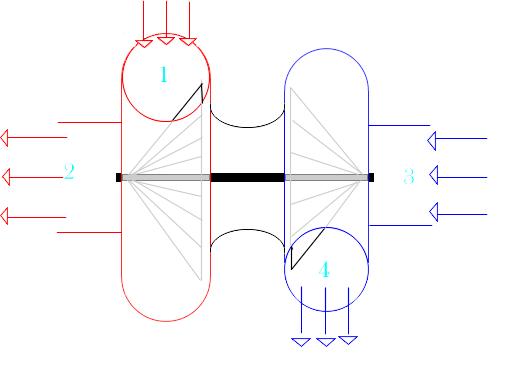 How They Work
How They Work
A turbocharger works by compressing outside air and forcing it into an engine. The increase in oxygen inside the engine is sensed by the vehicles computer and it signals the engine to add more fuel. This increase in air and fuel inside the engine creates more power. The actual will process is much more technical, and will in part be explained here. A turbocharger consists of two turbines, or propeller like pieces connected to each other. One is exposed to flowing exhaust gasses leaving the engine. These gasses cause the turbine to spin, and this causes a separatly contained turbine to spin. This second turbine is exposed to fresh air, and this is the air that will be used to mix with fuel for the engine to burn. This turbine spins at extremely high speeds, compressing the air, which causes it to increase in temperature. This hot air is then sent through an intercooler which lowers its temperature, therefore making it more dense and more effective for producing power. The dense, cool air then enters the engine and is burned with the fuel. The exhausted gasses then repeat the cycle.
Picture 1: Top view of Turbocharger
Picture 2: Side view of Turbocharger


In these pictures the exhaust gas can be seen entering at one. The gas expands through the turbine to two, causing it to spin. This turbine is connected to the compressor turbine on the fresh air side, causing it to spin. This turbine brings in fresh air at three, and compresses it out at four. An intercooler would be connected between point four, and the engine to cool the heated air and make it more dense. Another important component of the turbocharger is the wastegate. This is a tube that connects between points one and two outside of the turbocharger. If too much exhaust is flowing, and the turbines are spinning faster than is safe for the engine, a valve in the wastegate opens, directing exhaust out to the muffler. This prevents too much pressure from building at one, causing the turbocharger to operate at dangerous speeds.